Garden edging can completely change the look of your outdoor space, giving it structure and style. Whether you’re looking for something sleek and modern or charmingly rustic, there are plenty of creative ways to define your garden boundaries. Let’s jump into some fresh and fun design ideas to help you elevate your garden game!
Wooden Plank Edging
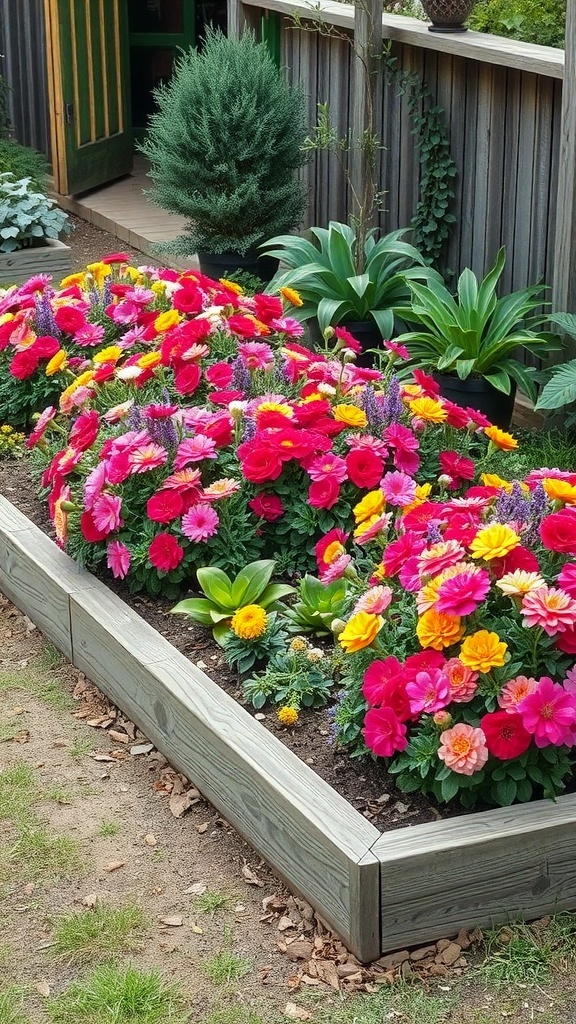
Wooden plank edging is a charming way to define garden beds and create a neat look. The image shows vibrant flowers surrounded by sturdy wooden planks, giving the garden a polished feel.
This type of edging not only adds structure but also complements the natural beauty of the plants. The contrast between the earthy wood and colorful blooms enhances the overall appeal.
Using wooden planks is practical too. They help keep soil in place and prevent grass from creeping into flower beds. Plus, they can be easily customized to fit any garden shape or size.
For a rustic touch, consider using reclaimed wood. It adds character and can be a sustainable choice. Whether you opt for a straight line or a curved design, wooden plank edging can elevate your garden’s style.
Metal Garden Edging
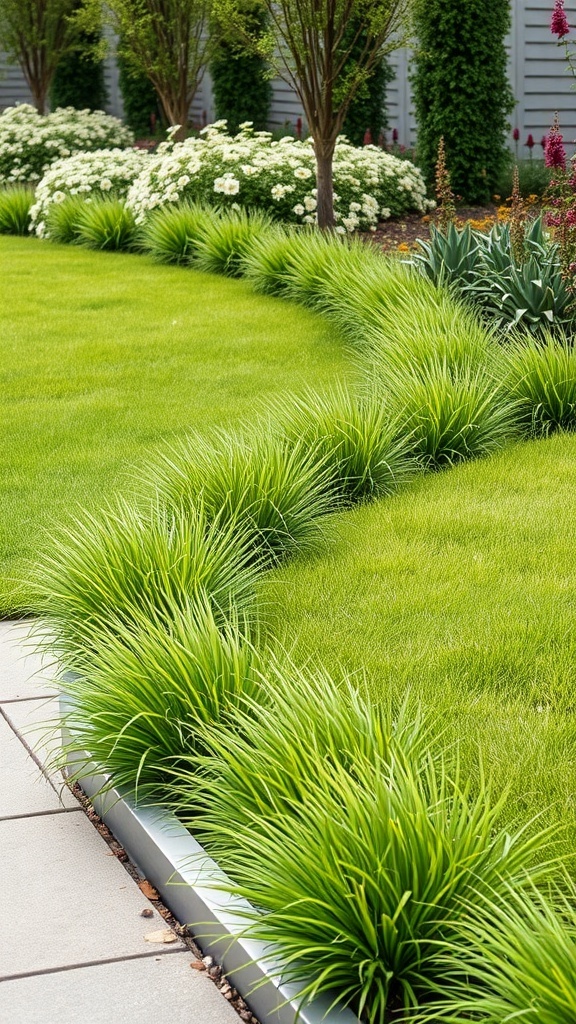
Metal garden edging is a stylish way to define your garden beds and pathways. The image shows a sleek, modern metal border that beautifully complements the lush green grass and vibrant plants. This type of edging not only adds a clean look but also helps keep grass and weeds at bay.
Using metal for garden edging offers durability and a contemporary feel. It can withstand the elements, making it a long-lasting choice for your outdoor space. The smooth lines of the metal create a nice contrast with the soft textures of the grass and plants, enhancing the overall design.
Another great feature of metal edging is its versatility. You can easily shape it to fit any garden layout, whether you prefer straight lines or gentle curves. This flexibility allows you to get creative with your garden design, making it unique to your style.
Overall, metal garden edging is a practical and attractive option that can elevate the look of your garden. It’s a simple addition that can make a big difference in how your outdoor space feels.
Corten Steel Edging
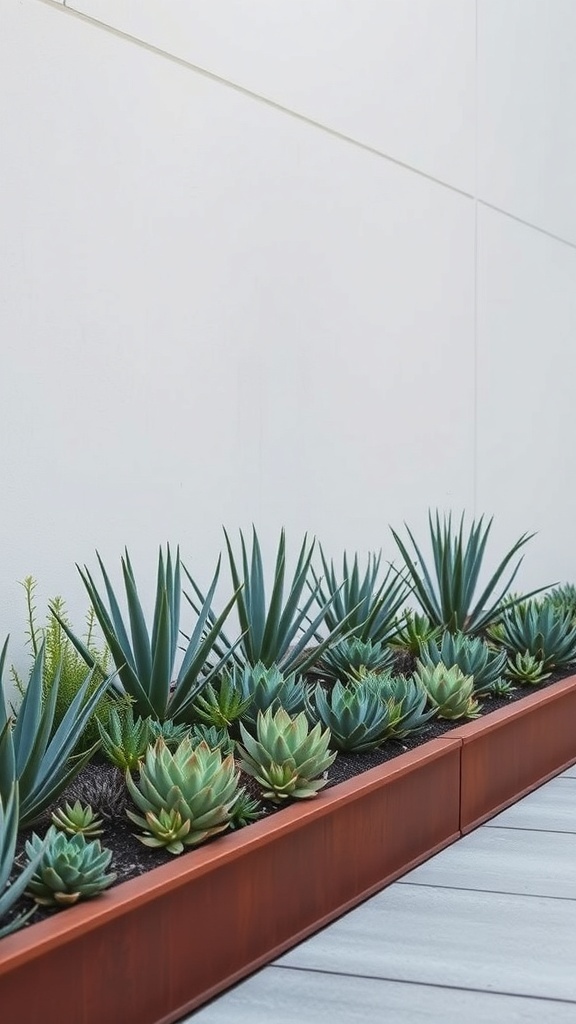
Corten steel edging is a fantastic choice for garden design. It brings a modern touch while being incredibly durable. The rich, rust-like finish of corten steel adds warmth and character to any garden space.
In the image, you can see how the corten steel edging beautifully frames a row of succulents. The contrast between the sleek steel and the vibrant greens of the plants creates a stunning visual effect. This type of edging not only defines the garden bed but also helps retain soil and moisture.
Using corten steel is practical too. It weathers naturally, so you don’t have to worry about painting or maintaining it frequently. Plus, it complements various landscaping styles, from contemporary to rustic.
If you’re considering garden edging options, corten steel is worth exploring. It’s stylish, functional, and adds a unique flair to your outdoor space.
Recycled Tire Edging
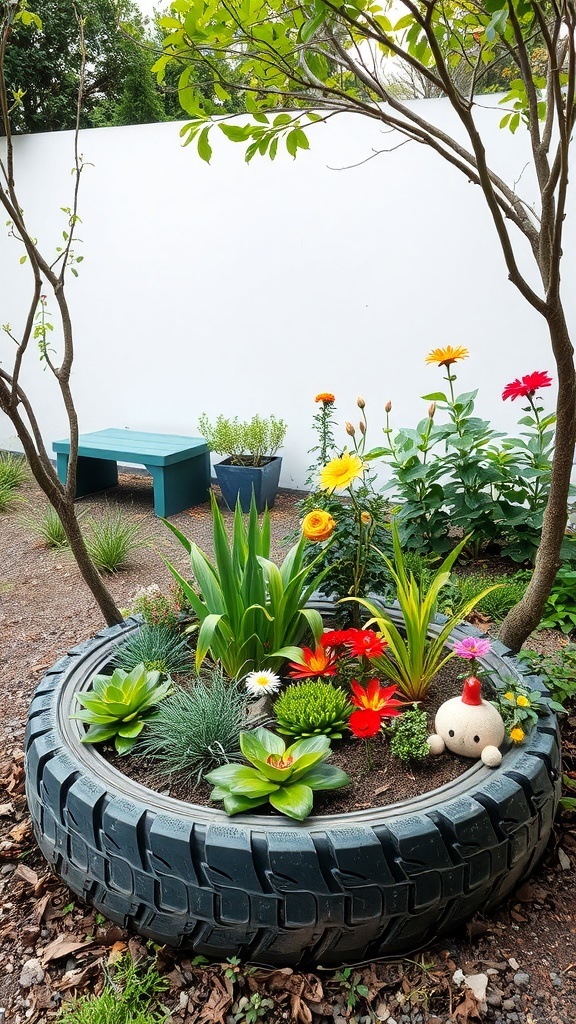
Using recycled tires for garden edging is a fun and eco-friendly way to enhance your outdoor space. The image shows a vibrant garden nestled within a repurposed tire, showcasing how creative you can get with materials that might otherwise end up in a landfill.
The black tire contrasts beautifully with the colorful flowers and greenery planted inside. This not only adds a unique touch to your garden but also provides a sturdy barrier that keeps soil in place. The tire’s shape creates a cozy, circular garden bed that invites exploration.
Incorporating recycled tires into your garden design can spark conversations and inspire others to think about sustainability. You can paint the tires in bright colors or leave them as is for a more rustic look. Either way, they are sure to add character and charm to your garden.
Terracotta Pot Borders
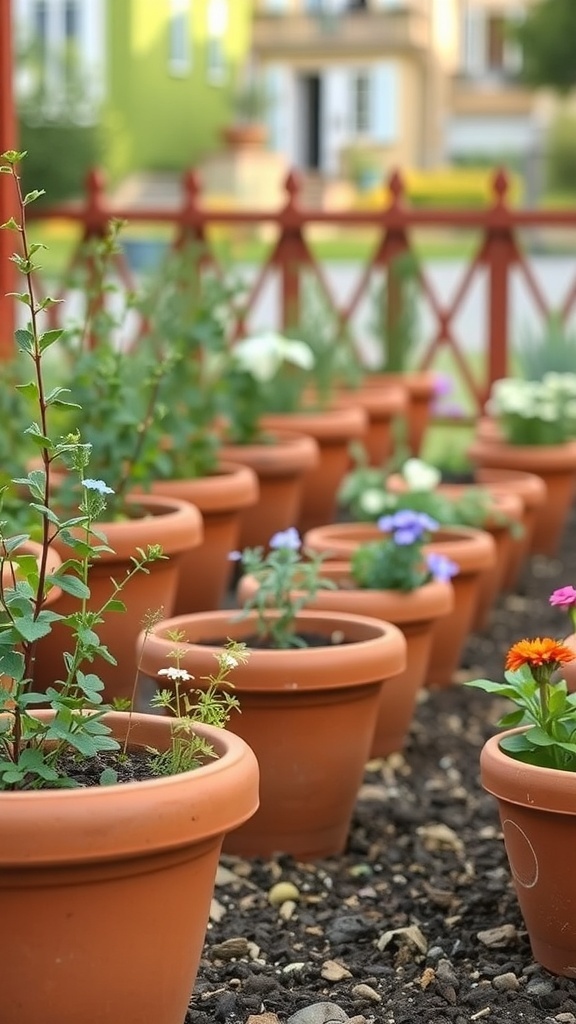
Terracotta pots bring a warm and inviting feel to any garden. They’re not just for planting; they can also serve as charming borders that define spaces in your outdoor area. The image shows a row of terracotta pots filled with colorful flowers, creating a delightful visual appeal.
Using terracotta pots as borders is a simple way to add character to your garden. You can arrange them in a straight line or in a more whimsical pattern. This flexibility allows you to customize your garden layout easily. Plus, the earthy tones of terracotta blend beautifully with greenery and blooms.
Consider varying the sizes of the pots for added interest. Smaller pots can be placed in front of larger ones, creating depth. You can also mix in different plants for a vibrant display. Herbs, flowers, or even small shrubs can thrive in these pots, making your border both functional and decorative.
Another great idea is to paint or decorate the pots. This can add a personal touch and make your garden even more unique. Whether you choose bright colors or subtle designs, your terracotta pot borders can reflect your style.
Natural Stone Borders
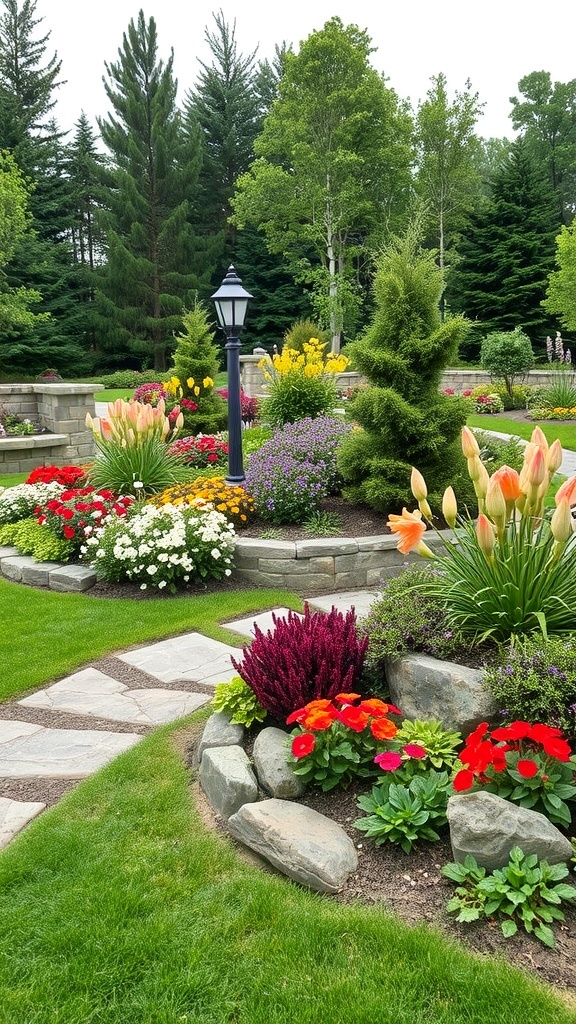
Natural stone borders add a timeless charm to any garden. They blend beautifully with the surrounding landscape, creating a seamless transition between different areas. In the image, you can see how the stones outline the flower beds, giving structure to the vibrant blooms.
The stones vary in size and shape, which adds character. This randomness makes the garden feel more organic and less manicured. The earthy tones of the stones complement the colorful flowers, enhancing their beauty without overshadowing them.
Using natural stone for edging is practical too. It helps keep soil and mulch in place while preventing grass from creeping into flower beds. This way, your garden stays tidy and well-defined.
Whether you choose large boulders or smaller pebbles, natural stone borders can elevate your garden design. They invite visitors to explore and appreciate the beauty of nature.
Concrete Curved Edging
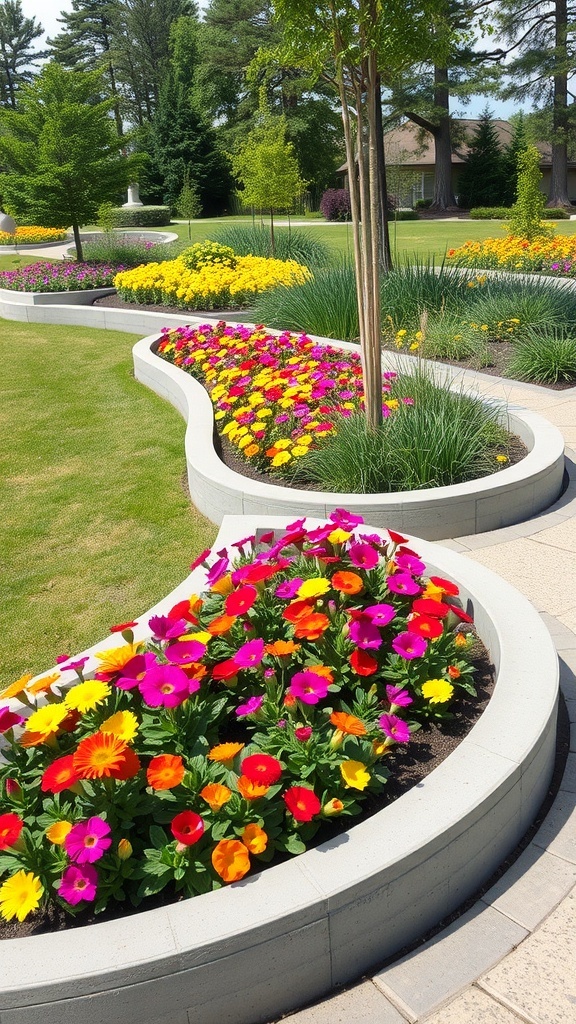
Concrete curved edging is a fantastic way to define your garden beds while adding a modern touch. The smooth, flowing lines create a gentle separation between the garden and the lawn, making the space feel organized and inviting.
In the image, you can see vibrant flowers nestled within the concrete borders. The colorful blooms stand out beautifully against the neutral gray of the concrete, creating a lively contrast. This design not only enhances the visual appeal but also helps keep the soil in place, preventing erosion.
Curved edging allows for creativity in garden layouts. You can create unique shapes that complement the natural flow of your yard. This flexibility makes it easier to work around existing trees and shrubs, giving your garden a more organic feel.
Moreover, concrete is durable and low-maintenance. Unlike wood or plastic, it won’t rot or fade over time. This means your garden will look great for years to come with minimal effort.
Brick Pathway Edging
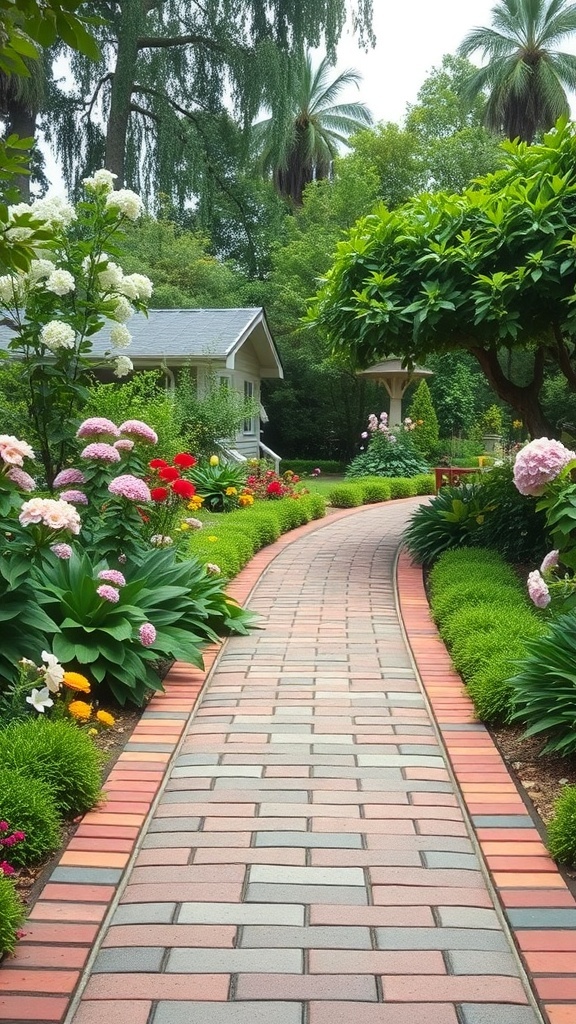
Brick pathway edging is a charming way to define your garden spaces. The image showcases a lovely brick path winding through vibrant flowers and lush greenery. The warm colors of the bricks complement the colorful blooms, creating a welcoming atmosphere.
This type of edging not only adds structure to your garden but also guides visitors along a scenic route. The gentle curves of the pathway invite exploration, making it a delightful feature for any outdoor space.
Using bricks for edging is practical too. They are durable and can withstand the elements while maintaining their beauty. Plus, they come in various colors and sizes, allowing you to customize your design to fit your style.
Whether you have a small garden or a sprawling landscape, brick pathways can enhance the overall look. They can lead to seating areas, flower beds, or even a cozy nook for relaxation. With the right design, your garden can become a peaceful retreat.
Pebble and Gravel Edging
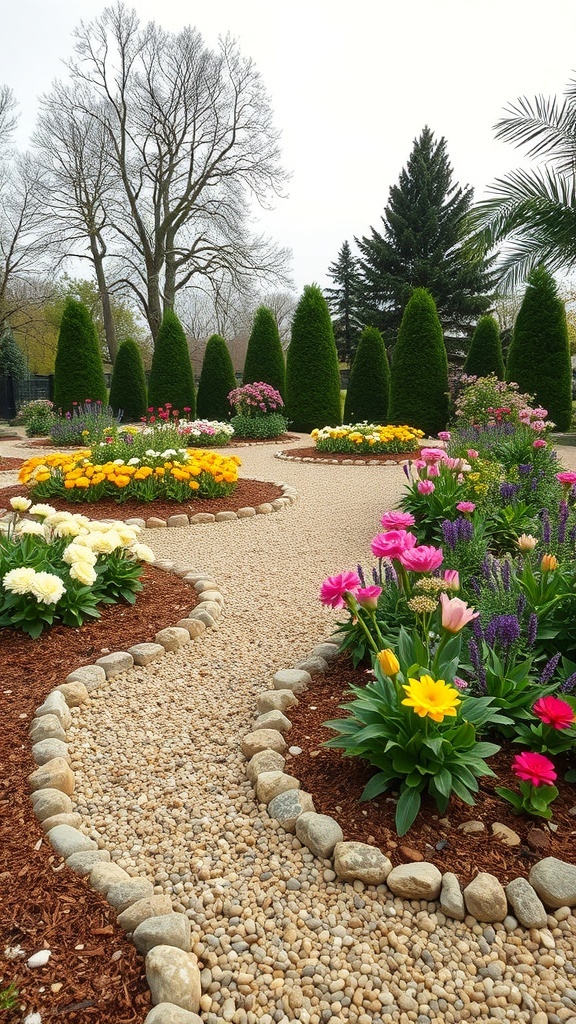
Pebble and gravel edging is a fantastic way to define garden spaces while adding a touch of charm. The image showcases a beautifully designed garden path lined with smooth pebbles, creating a clear boundary between the flower beds and the walkway.
The use of pebbles not only looks great but also serves practical purposes. They help with drainage and prevent soil erosion, making them a smart choice for any garden. The gentle curves of the path invite you to stroll through the vibrant flowers, enhancing the overall appeal of the garden.
Incorporating different sizes and colors of gravel can add depth and texture to your garden design. This approach allows for creativity, as you can mix and match to suit your style. Whether you prefer a more natural look or something polished, pebble and gravel edging can adapt to your vision.
Living Plant Edging
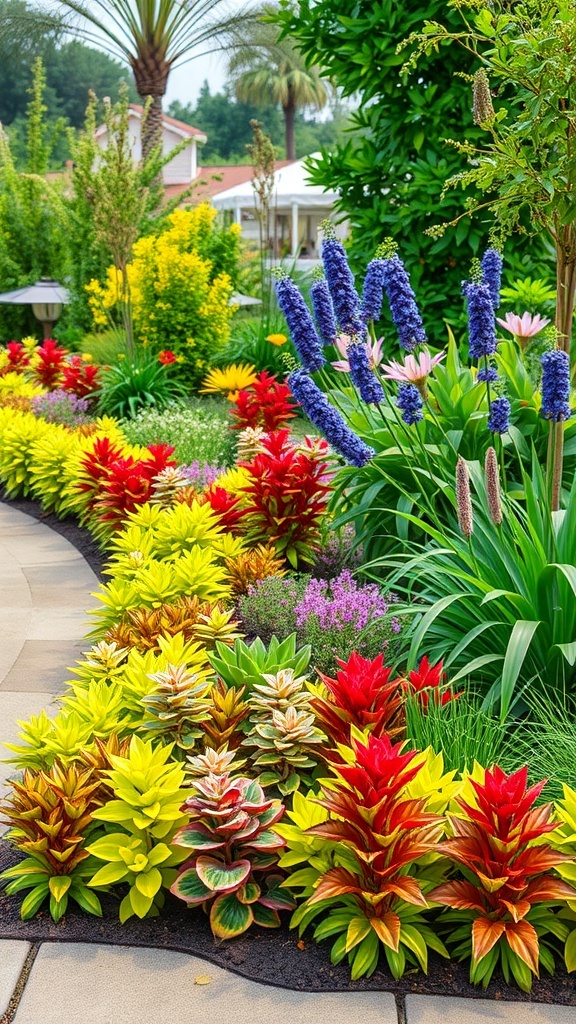
Living plant edging is a fantastic way to define garden spaces while adding a splash of color and texture. The image shows a vibrant arrangement of plants, showcasing a mix of reds, yellows, and greens. This lively display not only enhances the visual appeal of the garden but also creates a natural barrier that separates different areas.
Using plants as edging can soften the hard lines of pathways or borders. The lush foliage and bright flowers invite the eye and draw attention to the garden’s design. Consider using a variety of plants that bloom at different times to keep the edging looking fresh throughout the seasons.
Incorporating living plants into your garden design can also benefit the environment. They attract pollinators and provide habitats for beneficial insects. Plus, they can help with soil erosion and improve air quality. So, while you’re beautifying your space, you’re also contributing positively to nature!
